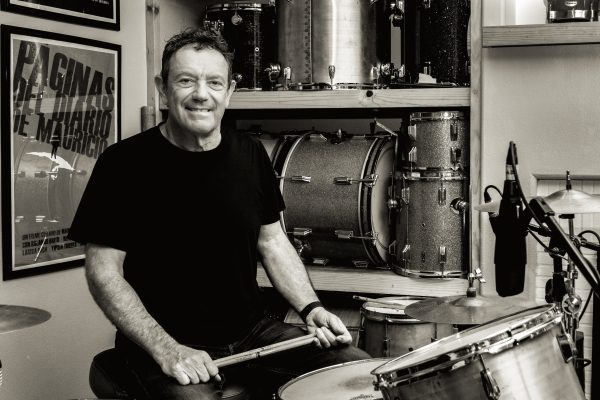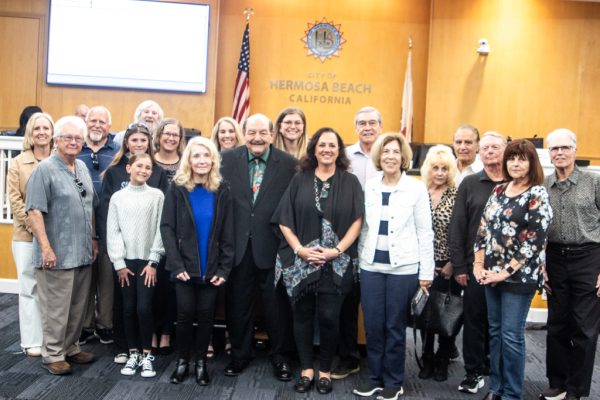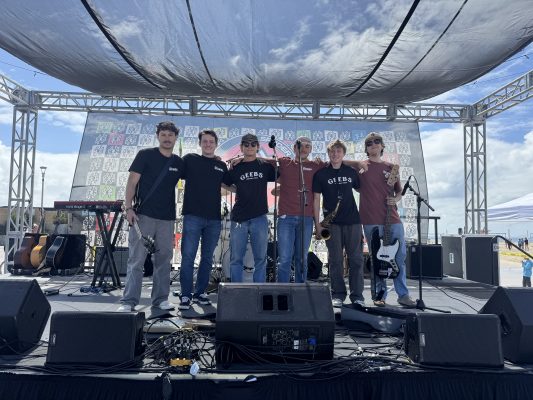
It was sunrise on the morning of November 19, 1949. Pan Am flight 121, a brand new, four-engine Boeing Stratocruiser, christened the “Star of the Sea,” had just broken out of the clouds on its way down from 15,000 to 10,000 feet while its crew completed their pre-landing checklist prior to theirSouthern Californiaarrival.
This leg of the trip was the highlight for any pilot. They were just beginning to get into radar range of LA, so the crew could rely on visual flight rules and landmarks to assist with the navigation. They had been advised by LAX weather Center that the atmospheric pressure was falling rapidly and to expect strong crosswinds on the decent.
The ocean below was dotted with whitecaps, each one going in different directions, running into each other, and then disappearing below the surface. The winds that were buffeting their plane were also lifting the fog from thePalosVerdesPeninsula, a landmark critical for pilots attempting an over-water approach into LA. Their location was just east of theChannel Islands. They were honing in on the beacon at San Nichols. The plan was to then get a visual on the point at Palos Verdes before turning left as they flew over the Coast Guard Weather Station “November,” and then following a northerly route up theSouthBaycoast until they met the localizer beacon off of LAX. There, they’d make a sharp right turn towards the runways.
The flight engineer had been leaning over the left seat window, taking pictures from a camera his kids gave him when Captain Mike Vandergoss asked him, “Did you catch that?”
The engineer responded “I think so. Wait, oh, I see! I was just trying to shoot that TWA Constellation on his climb out over Catalina. That Sea Eagle appeared out of nowhere. I guess he wanted to be in the picture.”
“Should we wake up the passengers?” First Officer Seth Oldenberg, who had been flying the plane, asked his crew.
“Sure, hit the bells,” the captain responded as he settled back into his the left hand seat to assume command of the airliner on its final approach.
He had just picked up the mike to advise LA that they were descending, again, from 10,000 to 7,500 ft when the sole stewardess Carly Byrnes knocked on the cabin door , walked in and announced, “Listen, there’s a guy who’s been in the lavatory for about 20 minutes now. I’ve knocked to see if he was okay, but there’s been no response. I’m not sure if he’s fainted or in distress. I think one of you guys need to go back and unlock the door.”
Oldenburgvolunteered for that assignment, but not before getting a bit more information. “How old is this guy and is he traveling with anyone else? Where is his seat, maybe there’s medicine or pills or something that he needs that he left in the overhead bin or seat pocket”
“His seat assignment is 10D, he’s about 60, was traveling alone, and had no carry on baggage,” the stewardess said. She added, “About an hour ago, I was walking down the aisle checking to see if all the seat belts were secured. He was wide awake, even though all the other passengers were asleep.”
“Okay,” the first officer said. “Go ahead and make sure the cabin is ready for landing. I’ll call the tower and let them we may have a medical issue on board, then I’ll head back and unlock the lavatory.”
Just then, there was a loud, but muffled explosion from the back of the Boeing, a blast that was followed by the sound of rushing wind, and as one passenger later told investigators, “It looked like one of the clouds that we had just passed through on our decent was entering through a big hole in the port side of the airliner. The cabin was filled with fog.”
Oldenberg grabbed a flashlight and a gun that the FAA issues overseas crews, and, after locking the Captain in the cockpit, walked down the cabin aisle.
The passengers pointed to the back of the plane. There was a 3-foot by 6-foot hole in the fuselage where the lavatory used to be.
Stewardess Byrnes, though visibly shaken, moved the passengers to the front of the plane. She also whispered toOldenburgthat the gentlemen in 10D never exited the lavatory. The first officer continued his inspection of the airliner, and saw no other damage. Though the explosion occurred dangerously close to the stabilizer, it appeared intact and was operating normally.
Oldenberg ran back to the flight deck and advised the rest of the crew of his observations. He noticed that at present, all the gauges were normal, altimeter was in the correct position, which meant they could fly the rest of the way to LAX instead of “ditching the plane.”
Captain Vandergoss radioed LA Center of their situation. They would need a priority landing, and ditching was a possibility. He asked they notify the Coast Guard and Lifeguard Baywatch that a passenger may be in the water just off ofSanNicolasIsland. He also said he was going to stay with the “over-water” approach and they were going to hug the coastline on their final.
LA Center responded, “OK, Pan Am, looks like you have it under control, the runway is all yours. We have a Western Airlines DC4 that has a visual on you. He’s looking over your aircraft now, and may have a suggestion or two. Stand by.”
The Captain responded, “Tell him I’m open to any ideas right now that’ll get us down safely — that is, anything that doesn’t involve swimming.”
“Roger that,” the tower responded. “Stand by. Western 76 is transmitting…..ummm Pan Am. The Western crew says you have a big hole in your airplane.”
In-flight explosions never had ended successfully, a thought on everyone’s minds when the controller asked for the “souls on board.”
The Pan Am crew determined that the missing passenger’s name was James Hayden, 65, ofRedondo Beach. They had notified their company staff at West Imperial Terminal of their findings, and to see if anyone in the terminal might be waiting for his arrival. The LA Fire Dept sent trucks to the southern runway, while several rescue ambulances entered the driveway off ofImperial Hwy.
The Pan Am station agent was querying the handful of people in the lobby when he got to a 50-something year old guy who was unable to explain why he was in the lobby. He shoved the agent out of the way and walked toward the exit, and almost made it outside, but not before he was side-checked by the “Crusher,” — 6-foot-3, 280 pound off-dutyHermosa Beachpolice officer named Byron Wright, who’d arrived at the terminal to meet his parents on the ill fated flight fromHawaii. Wright had his suspect on the ground and cuffed, and didn’t need to check his ID, due to several run ins with him before. Alexander Macalusi was a collector, a goon for the local racetracks and casinos in nearbyGardenaandBell, and in better times, the “Breakaway” a floating casino located three miles off the Hermosa pier.
The Stratocruiser was almost home. It rounded the last beacon and lined up with runway 9L. First officer Oldenberg lowered the wheels and hit the landing lights. There was no applause from the waiting family members and the lobby personnel when the back wheels hit the pavement, just looks of awe and amazement as the Boeing rolled by at 100 m.p.h. The 3-by-6 foot gap that had been reported by the crew was now at 10-feet by 10-feet. The firefighters could see the luggage secured in the cargo hold, including two ukuleles tied to a child’s bag.
Wright began to question Macalusi. Macalusi didn’t hesitate to admit he was there to “greet” the missing passenger at the gate, that he and the people he was working for didn’t appreciate Hayden taking such an expensive trip to the Islands when he was intoHollywoodParkfor so much money. Macalusi was going to bring the passenger back to his bosses to see if they could work out a “payment plan.”
Baywatch Redondo and Catalina conducted a search of the water in the area where the flight crew had reported the explosion. Parts of the Stratocruiser were found, in close proximity of the floating body of passenger James Hayden.
From the beginning of this investigation, it was clear that the Pan Am incident was not due to a problem with the airliner. The Stratocruiser was a reliable craft with no history maintenance issues. When Baywatch transported the body back to theRedondo Beachpier, one of the guards noticed what he thought to be blasting caps in the victims coat pocket, not that he knew what real caps looked like, but he had seen them several times in “Road Runner vs. Wiley E Coyote” cartoons. In the pocked of seat 10d, the flight crew found something with a very short fuse.
The evidence led to only one possible conclusion: Passenger James Hayden, was in hock to some very bad people, and had no way to pay them back. He was known to have relatives inHawaii, maybe he was trying to borrow from them. When that loan didn’t come through, Hayden knew what was waiting for him when he got back to LA, and decided on his own way of dealing with the problem. Why he waited until the plane was over theChannel Islandsto blow himself up will be up to the arm chair detectives to figure out. No note was ever found, but investigators later determined that he had mortgaged his home several times through A & D Thrift on Catalina Island, a subsidiary of one of the local racetracks, and had been banned from wagering on any of the boats that were anchored off theSouthBaycoastline.
None of these details made the papers. The only coverage was of the heroic efforts of the crew to bring the plane in safely and interviews with the passengers who, surprisingly, did not panic after the explosion and the rapid decompression that followed. The plane was a total write-off. It was scrapped and sold off as parts toThird Worldnations and their emerging airlines.
Macalusi was never charged with shoving the gate agent, a decision made by the Airport Authority, who didn’t want any more negative press.
Author’s note: This story is a confabulation of incidents that occurred off the waters of the South Bay between 1949 and 1957. The names are fictitious, but the locations and occurrence are factual. B











